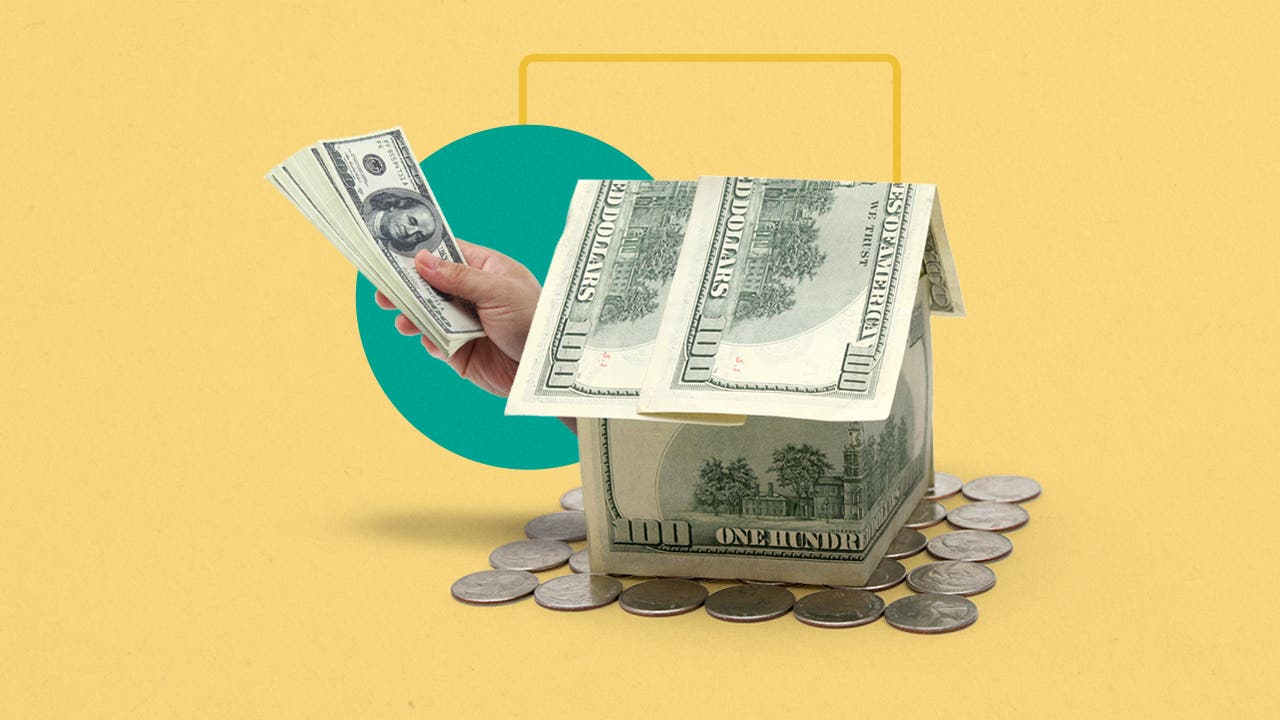How much does it cost to refinance a mortgage?




Key takeaways
- Refinancing your mortgage typically costs between 2 and 6 percent of the new loan amount. These closing costs might include fees for origination, a home appraisal and title services.
- You can save on the cost of refinancing by boosting your credit score, comparing mortgage terms and rates and negotiating closing costs.
- Before refinancing, figure out when you’ll break even — the point at which your monthly savings surpasses the upfront cost.
Refinancing your mortgage can lower your monthly payment, turn your equity into cash or change up your loan type and term. The process isn’t free, however — there are upfront expenses similar to when you first got the mortgage. If you’re deciding whether to refinance, make sure it’s worthwhile given the costs.
How much does it cost to refinance?
The average mortgage refinance includes $2,375 in closing costs, excluding any taxes, according to ClosingCorp. These costs vary by the size of your loan and where you live. Generally, you can expect to pay between 2 percent and 6 percent of the new loan balance in closing costs. For example, if you’re refinancing a $150,000 mortgage, you might pay between $3,000 and $9,000 in closing costs. Here’s a breakdown of common closing costs:
| Closing costs | Fee |
|---|---|
| Application fee | Up to $500 |
| Origination and/or underwriting fee | $300 – $500 |
| Recording fee | $25 – $250, depending on location |
| Appraisal fee | $300 – $500 |
| Credit check fee | $25 |
| Title services | $300 – $2,000 |
| Survey fee | $2,300 on average |
| Attorney/settlement fee | $500 – $1,000 |
Along with closing costs, you’ll pay a new interest rate. This rate depends on many variables, including your:
- Credit score
- Lender
- Type of refinance
- Loan size and term
- Property type
How much does it cost to refinance government-backed loans?
Government-backed loans — including FHA, VA and USDA loans — all offer streamline refinance options for qualifying borrowers that may cost less than a conventional refinance. Streamline refinances have fewer hoops to jump through. For example, you may not need a credit check or an appraisal.
To qualify for this option, you must not use the refinance to cash out equity.
On the other hand, government-backed loans come with their own fees. For instance, VA loans require you to pay a funding fee when you refinance, and FHA loans may require you to pay mortgage insurance premiums (MIP).
How to lower the cost to refinance
If you’re refinancing to lower your monthly payment, paying less to refinance helps you realize those savings more quickly. You can lower your refinance costs by:
1. Boosting your credit score
Just as first mortgages have credit score requirements, you’ll need to meet credit score minimums to refinance, too. The better your credit, the lower your refinance rate. You can boost your credit by paying off debt, among other strategies.
2. Comparing mortgage offers and rates
To score the best possible rate, compare several mortgage refinance lenders. To get a fuller sense of the loan’s cost, look at the annual percentage rate (APR), which includes interest and fees. A mortgage broker may help you get a wider range of quotes. Always get a quote from your existing lender, too, in case it offers a lower-cost refinance or other repeat customer benefits.
3. Negotiating closing costs
As with your first mortgage, look closely at the loan estimate from your lender. You might save money by negotiating closing costs, especially if you’ve shopped around and have more than one refinance offer. You can use other quotes to check for unusually high fees as well.
4. Asking for fee waivers
In the same vein, ask your bank or lender if it will waive or lower the application fee or credit check fee — especially if you’re an existing customer. You may also be able to forgo a new home appraisal or property survey if you’ve recently had one done.
5. Choosing your original title insurer
In many states, title rates are regulated, but it may cost less for your title insurance company to reissue your policy for your refinanced loan than it would to start over with a new company or policy.
6. Considering a no-closing cost refinance
If you’re low on cash, consider a no-closing cost refinance. The name is a bit deceiving, as this refinance isn’t free of closing costs; you simply won’t pay the fees at closing. Instead, the lender will either raise your interest rate or fold the closing costs into the new loan.
Calculating your break-even point
If you’re refinancing to lower your monthly payment, it’s essential to figure out your break-even point — when your savings outweigh your closing costs.
Say your new, lower rate will decrease your monthly payment by $100 every month and refinancing costs you $3,000. That means it will take 30 months — or 2.5 years — before you realize the savings. If you don’t plan to sell or refinance in that time, it could be worth it to refinance now.


